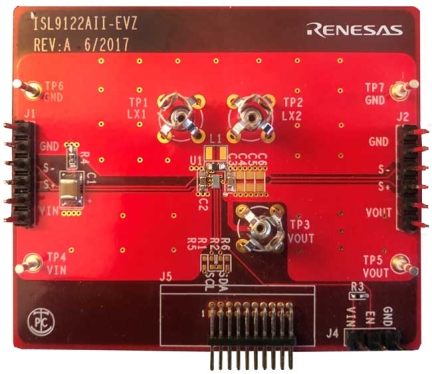Overview
Description
The ISL9122AIIN-EVZ platform allows quick evaluation of the high-performance features of the ISL9122A ultra-low IQ buck-boost regulator in the WLCSP package. The ISL9122A is a highly integrated non-inverting buck-boost switching regulator that accepts input voltages both above or below the regulated output voltage. This regulator automatically transitions between buck and boost modes without significant output disturbance. And, it features an extremely low quiescent current consumption, excellent efficiency, and an I2C interface, which allows the user to access its internal registers for output voltage and operation mode control.
Features
- Small, compact design
- I2C interface for programmable VOUT, slew rate and various operation modes (forced bypass, auto-PFM, forced PWM)
- Connectors, test points and jumpers for easy probing
Applications
- Smart watches and wristband devices
- Wireless earphones
- Internet of Things (IoT) devices
- Water, gas and oil meters
- Portable medical devices
Documentation
Featured Documentation
Log in required to subscribe
|
|
|
|
|---|---|---|
| Type | Title | Date |
| Manual - Development Tools | PDF 1.02 MB | |
| Datasheet | PDF 893 KB | |
| Manual - Development Tools | PDF 795 KB | |
3 items
|
||
Design & Development
Product Options
Applied Filters:
